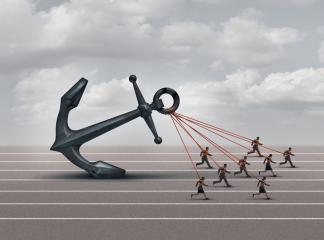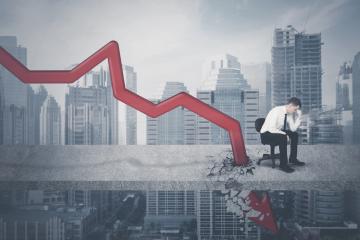Watch Your Credit Card Debt
Are you keeping your credit card debt under control? Recent data from Bloomberg shows that more consumers are having a hard time doing so.
Credit card issuers reported a 3.82% charge-off rate on credit cards in the first quarter of 2019 – the highest percentage of written-off accounts in almost seven years. In addition, accounts that are 30 days past due increased for each of the seven largest card issuers, suggesting the charge-off trend will continue. (If you're already 30 days late on your payments, you're at increased risk of default.)
Banks are nowhere near panic, nor should they be. Data from the St. Louis Federal Reserve shows that delinquencies are still near historic lows, well below the 6.77% peak in the second quarter of 2009. For perspective, St. Louis Fed data shows that the delinquency rate on credit card loans for all commercial banks fell below the 3% mark in Q2 2012 and has not topped 3% since then. From 1991 to 2012, the delinquency rate was never below 3%.
The post-recession credit-tightening measures have clearly worked, but financial markets are aware of how bad trends can spiral – and even a small steady rise is cause for concern.
Across the Board
Not all card issuers saw a peak default percentage in 2019, but issuers across the board showed a significant increase since 2016.
Synchrony and Capital One had the highest rates at 6.1% and 5%, respectively. Bank of America, Discover, Wells Fargo, J.P. Morgan, Citigroup, and U.S. Bancorp have all seen steady increases since early 2016. Even the typically reliable American Express saw write-off rates increase from 1.5% in Q2 2016 to 2.3% in Q1 2019.
Credit card losses are increasing as a percentage of overall loan write-offs. Four of every five charge-offs are related to credit cards, compared to two of every three charge-offs in Q1 2016. Bloomberg notes that America's four largest banks wrote off nearly $4 billion in uncollected credit card debt in Q1 2019 compared to $656 million in bad debt from all other consumer loan types.
How Risky Are You?
Competition among credit-card companies is fierce, increasing the incentive to stretch qualification boundaries. Banks are also having a tougher time assessing risk. Research from the Federal Reserve shows signs of "grade inflation" among credit scores. A credit score of 660 is a typical boundary for subprime lending, but the risk associated with that boundary is not the same as it was ten years ago. You can check your credit score and read your credit report for free within minutes by joining MoneyTips.
As banks issue more credit cards to marginal borrowers – whether accidentally or on purpose – it's reasonable that credit card charge-offs would increase. However, the banks aren't in charge of how people use the credit cards that they issue. Individuals are responsible for their own credit usage, whether they are prime, marginal, or just hanging on by their fingernails.
You know your own risks and limits with credit – and if not, you should.
The Takeaway
If you're delinquent on your credit card payments, it's obvious that you need to take immediate and drastic action to recover your financial health. Just like your physical health, it's better to start addressing financial health issues before the situation becomes dire. Bloomberg's data suggests that many people aren't adjusting their budget quickly enough, or don't have the means to adjust at all.
Are you trending in the wrong direction with your credit card debt? If you can't pay off your cards in full every month, can you pay in full in any month? Debt doesn't have to be completely eliminated, but it must be manageable and not trending upward every month. Review your budget and make corrections now before you get into a debt spiral and start missing payments – and if you don't have a realistic budget, create one.
Make sure to include annual expenses in your budget, such as taxes and subscriptions. Sprinkle in contingency money for occasional financial setbacks. Don't forget to set some income aside for emergency funds and retirement contributions. Your job is to control the rest of your spending to come out at least even every month – and eventually achieve a surplus to pay down debt and increase savings.
It's not easy. You may have to eat out less often, forgo some of your entertainment options, scale back your smartphone data package – or even get a side gig to increase your income. The satisfaction of paying all monthly bills and still having money left over will be worth the sacrifice.
Credit card companies are happy to let you run up balances, given that interest charges are a primary source of their incomes. The burden is on you to keep running balances as low as possible to avoid debt spirals, delinquency, and default.
If you want to reduce your interest payments and lower your debt, join MoneyTips and use our free Debt Optimizer tool.




